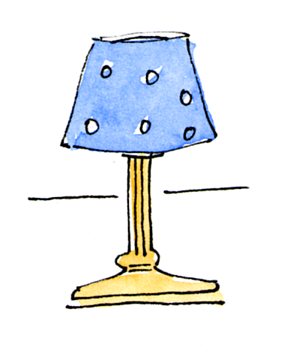Habitat was
once the leader in contemporary design. With his artful eye
and designer’s intuition Terence Conran ensured that each object
was expertly crafted and beautifully finished. The space was
sparse, angled spotlights circled individual products, and in its
Bauhaus chic Habitat appeared to effortlessly conjure a sense of
ageless modernity. Customers flocked, eager to purchase a
piece of functional design.
In 2011
Habitat went into administration and all but three of the stores were rushed
off the High
Street.
 Habitat no
longer stood as an icon of the comfortable middle classes, instead the brand had become
confused, lost somewhere between the extremes of Heal’s and Ikea. The art school
roots had dried-up and its inventive streak had been replaced by row upon row of
products that could have been found anywhere and at a fraction of the price.
Habitat no
longer stood as an icon of the comfortable middle classes, instead the brand had become
confused, lost somewhere between the extremes of Heal’s and Ikea. The art school
roots had dried-up and its inventive streak had been replaced by row upon row of
products that could have been found anywhere and at a fraction of the price.
The fate of
Habitat isn’t unique. Stores across the country are finding it increasingly difficult to
compete with the rising elite of the online mega-shop. After all prices are cheaper and
it’s quite a lot easier – one click of the mouse and no need to leave the
house.
In order to
combat the competition the High Street needs to capitalise on what it has – a premium
space in the centre of a city. The Habitat stores once laid out a
design-fuelled vision which
customers were keen to experience. Somewhere along the way this disappeared.
Though it is not the only factor to staying afloat, the stores that do still
offer an
experience seem to be surviving.
Liberty,
situated in the heart of London, is a perfect example. To walk through Liberty
is to be
plunged into the thick of things. From the very beginning we are bombarded with
a heady
mixture of delights for the eye. The Tudor-esque frontage, the buckets of
Lilacs and Lillies,
the Christmas displays, dazzling with sequins and velvet, all mingle to create a flamboyant
and compelling spectacle. Once inside, the dark wood panelling, the uneven
floors and metres of materials, together with the sparkling cabinets, continue
the
charm.
The store
conjures, however fleetingly, a glimpse of the past. It actively embraces its traditional
qualities, playing upon its heritage and history, its links with William Morris
and the
Pre-Raphaelites. However flashy the new online sites might be, the experience
that the Liberty
store offers is something they cannot capture. It is this experience that sets Liberty
apart, that makes people want to visit it and thus ensures its future.
In Sotheby’s
recent rebranding they have worked hard to exploit the value of the Sotheby’s experience’,
in order to directly counter online competition.
Similar to
any other store Sotheby’s, as an auction house, is now in competition with online
auction companies. In the last few years Chinese online auction sites have been popping up
and eating up a fair chunk of Sotheby’s market. Undercutting with their minimal
commission Sotheby’s has had to strike back. New marketing material, short films and
arty photographs are suddenly being commissioned left right and centre. The aim is to
promote the exclusive experience that Sotheby’s offers.
In these
short films the camera focuses in on the drama of an auction, the electric atmosphere,
the frowns and the claps, the laughs and the gasps. From the champagne bottles to
the wooden clack of the gavel as it comes down on another world record, it is all there,
luring the customer in. It is a complete performance, but one that is thrilling
to participate
in and one that you cannot fully experience sitting in front of a screen.
What makes
the experience even more appealing is that it is steeped in tradition; there are doormen
standing beneath the billowing flags at the entrance, sweeping staircases, high-ceilinged
rooms, ornate furniture. It is almost like a time capsule from another era, tapping into
our sense of nostalgia.
In a market
that is constantly changing, and highly unpredictable, this obvious heritage marks
Sotheby’s out and is certainly the reason behind the recent change of the logo, from
sans-serif to serif. Though it seems insignificant, the simple adding and
subtracting of tiny
lines, this change recalls Sotheby’s past, hinting at its wealth of experience.
In addition to
this it reminds customers of Sotheby’s longevity and its steadfastness in an unpredictable economic climate.
In a world
that is becoming increasingly virtual, where things are only seen behind glass, where it is
all at one remove, the first-hand experience is becoming increasingly sought after.
Brands that
use the space they have to provide an experience, and therefore a reason to visit, stand
a greater chance of succeeding. Brands that don’t, such as Habitat, might find they lose their way.






